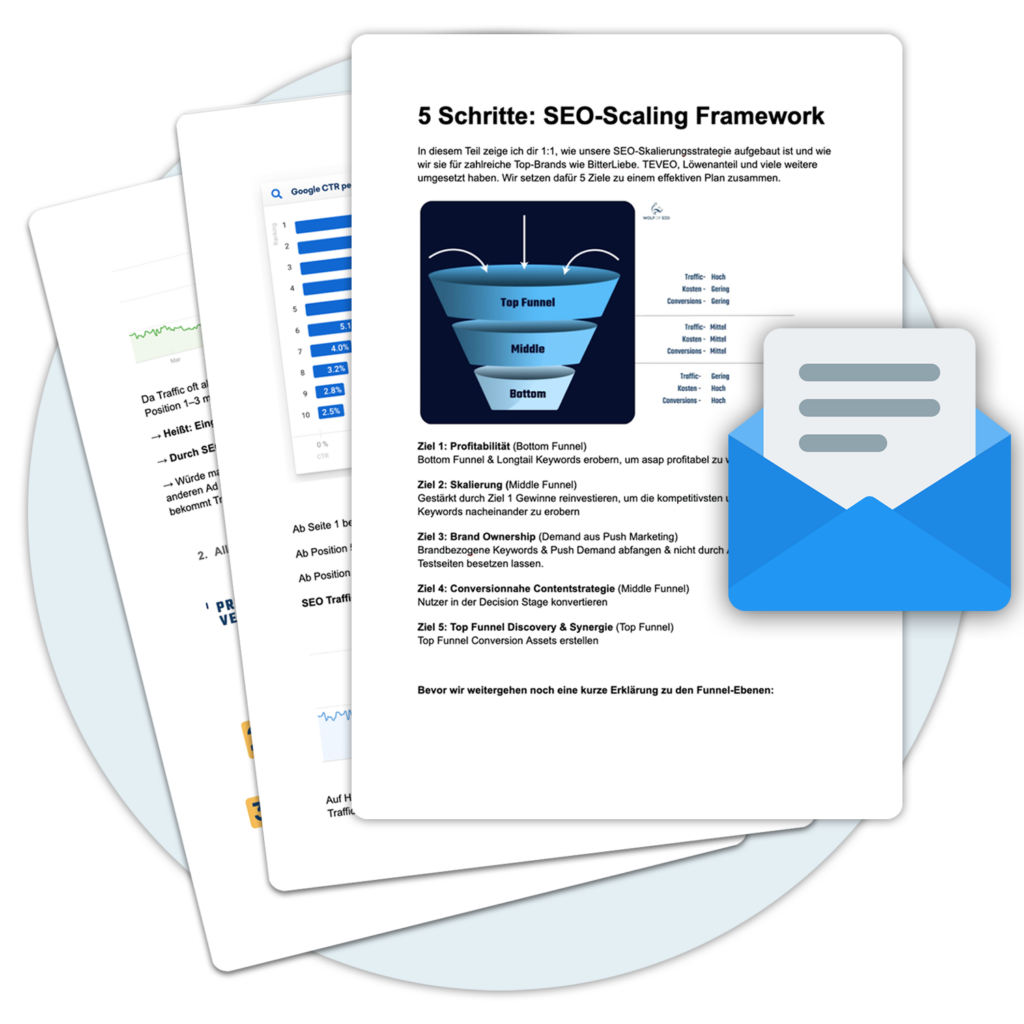What is affiliate fraud?
Affiliate fraud refers to fraudulent activities associated with affiliate marketing. In affiliate marketing, companies earn a commission by referring sales or generating leads. Affiliates, also known as partners or publishers, are rewarded for helping users buy or sign up for the company's products or services.
However, unfortunately, there are also people who try to exploit this system by using fraudulent methods to secure unearned commissions. Affiliate fraud harms not only the companies, but also the legitimate affiliates who work hard to earn honest commissions.
To understand affiliate fraud, it is important to look at the different types of fraud and figure out how to detect and prevent them. The impact of affiliate fraud should also be considered, as it can have significant financial losses and a negative impact on a company's reputation.
The effects of affiliate fraud
Affiliate fraud can have a serious impact on companies and their affiliate marketing programs. If fraudsters abuse the system, it can lead to financial losses and affect trust in the program.
The following effects can be caused by affiliate fraud:
- Financial losses: Fraudulent activities cause the company to lose money as affiliate commissions are paid out for non-legitimate activities.
- Reputation loss: If an affiliate network is associated with fraud, it can affect the trust of potential customers and advertisers.
- Waste of resources: To combat fraud, organizations must invest time and resources to identify and monitor suspicious activity.
- Damage control effort: After affiliate fraud is discovered, the company must take action to repair the damage done and restore the trust of stakeholders.
Types of affiliate fraud
Affiliate fraud is an unfortunate reality in the Online Marketing, which can have negative consequences for all parties involved. There are different types of affiliate fraud that are used by fraudsters to increase their revenue. By having a thorough knowledge of the different fraud methods, companies can take measures to protect themselves from it.
Click fraud
Click fraud is one of the most common forms of affiliate fraud. In this case, the affiliate link is manipulated in order to generate unauthorized clicks and thus increase the advertiser's commissions. This is usually done by using bots or automated scripts that generate a large number of clicks on the link.
This fraudulent activity can have serious implications for advertisers. Not only is the financial loss from paying commissions for invalid clicks problematic, but also the loss of credibility and reputation. If an advertiser finds that the generated clicks do not lead to any conversions, it becomes skeptical and might terminate the cooperation with the affiliate.
To detect click fraud, it is important to identify suspicious patterns. This can be, for example, an unusually high number of clicks from an IP address or a disproportionately high share of invalid conversions. It is also advisable to use anti-fraud tools to automatically detect and block suspicious activity.
To protect themselves from click fraud, advertisers should regularly monitor their affiliate activities and exclude affiliates that may be suspicious. In addition, there should be clear communication between advertisers and affiliates to draw attention to possible fraudulent activities and prevent them.
Cookie Stuffing
Cookie stuffing is a technique used by scammers to increase their affiliate commissions. In the process Cookies set on users' computers without them being aware of it. By overloading invisible iframes or hiding links behind invisible elements, the scammers can create the impression that a user has clicked on their affiliate link and earn a commission.
The fraud consists in the fact that the Cookies be used to attribute the sale to a specific affiliate, even though the user may not have consciously clicked on the affiliate link. This results in the fraudster receiving a commission even though he did not actually contribute to the sale.
To counter cookie stuffing, it is important to regularly check your affiliate links and identify suspicious patterns. In addition, anti-fraud tools can be used to detect and block the use of this fraud technique.
It is also recommended to check the cookie settings of the browser you are using and make sure that Cookies only be accepted from trusted websites. In addition, affiliate managers and companies should inform their affiliates about the importance of ethics and fairness and establish clear policies against cookie stuffing.
Spamming techniques
Spamming techniques are one of the most common methods of affiliate fraud. Here, unsolicited advertising messages are distributed in the form of mass e-mails or unsolicited pop-up ads. These spam messages are usually sent to a large number of potential customers without considering their consent or interest.
Fraudsters use spamming techniques to try to get more Traffic on their own websites in order to generate higher commissions. Fraudulent content or links to fake websites are often used to mislead users.
To detect spamming techniques, it is important to carefully check suspicious emails and pop-up ads. If these messages are unsolicited and unknown, caution is advised. Besides, anti-spam tools can be used to block such unwanted messages and increase protection against spamming techniques.
It is advisable to regularly monitor one's own affiliate activities in order to detect possible affiliate fraud at an early stage and take action against it. By working with trusted partners and using anti-fraud tools, spamming techniques can be effectively combated and damage caused by affiliate fraud can be minimized.
Other fraud methods
There are other types of affiliate fraud, including the use of fake websites or fake social media accounts to Traffic as well as the manipulation of conversion rates or the use of stolen credit card details. By being aware of these various fraud methods and proactively counteracting them, companies can protect their affiliate programs and ensure greater honesty and trust.
Detect affiliate fraud
It is crucial to identify affiliate fraud early to avoid financial damage and maintain trust in affiliate marketing. There are several methods and techniques that can be used to identify potential fraud.
Use of anti-fraud tools
To detect affiliate fraud, various anti-fraud tools and software solutions can be helpful. These tools use algorithms and analytics techniques to identify and monitor suspicious activity. For example, they can analyze click patterns to detect click fraud or check IP addresses on blacklists to identify known fraudsters.
| Advantages of anti-fraud tools: |
|---|
| Effective detection of fraudulent activity |
| Real-time monitoring of Traffic and conversions |
| Reduction of financial losses due to fraud |
| Support in the identification of fraudsters |
Using anti-fraud tools can reduce the effort and error rate involved in manually detecting affiliate fraud.
Regular monitoring of affiliate activities
Regular monitoring of affiliate activities is an important part of preventing and detecting affiliate fraud. By analyzing Traffic- and conversion data, suspicious activities can be detected at an early stage. One team or person should be responsible for monitoring all affiliate activities and reporting suspicious incidents.
It is advisable to establish clear guidelines and contractual conditions for affiliates in order to prevent fraud and to be able to take appropriate measures in case of fraudulent activities.
Identify suspicious patterns
When identifying suspicious patterns in affiliate fraud, it is important to pay attention to various indicators. Here are some clues you can use to spot fraudulent activity:
1. exceptionally high conversion rates: If an affiliate partner suddenly shows extremely high conversion rates, alarm bells should ring. It is possible that fraudulent measures such as the use of bots or purchased Traffic are in play.
2. unnaturally high click numbers: If an affiliate partner has conspicuously high click-through numbers but generates few actual conversions, this may be a sign of click fraud. It's important to monitor an affiliate's click activity closely to spot suspicious patterns.
3. unusual activity patterns: Pay attention to whether an affiliate partner shows unusually high activity at unusual times. It could mean that automated tools or bots are being used here to artificially increase click or conversion numbers.
4. repeated purchases from the same IP address: If the same IP address repeatedly makes purchases through different affiliate links, it could indicate fraud. It could be a single person trying to defraud commissions.
5. unusual dropout rates: Watch out for unusually high abandonment rates from an affiliate. If a high percentage of users abandon the checkout process, this may indicate fraudulent activity, such as the use of fake leads or fake purchases.
To identify these suspicious patterns, it is advisable to analyze both quantitative and qualitative data. Use tools for monitoring and tracking affiliate activity to detect potential fraud early and prevent damage.
Preventive measures against the affiliate fraud
To prevent affiliate fraud and minimize its negative impact, there are several preventive measures companies can take:
1. use of anti-fraud tools: Companies should rely on reliable anti-fraud tools that are able to detect and block suspicious activity. These tools analyze user behavior and identify irregularities to prevent potential fraud.
2. regular monitoring of affiliate activities: Continuous monitoring of affiliate activity is essential to detect fraud at an early stage. Companies should regularly review the performance of their affiliates and immediately investigate any suspicious patterns or unusual activity.
Use of anti-fraud tools
Using anti-fraud tools is crucial to fight affiliate fraud and protect your business resources. These tools can help you detect suspicious activity and prevent your affiliate programs from being harmed. Here are some important points to consider when selecting and using anti-fraud tools:
- Proven and reliable tools: Rely on proven and reliable anti-fraud tools that are specifically designed to protect against affiliate fraud. These tools should have advanced algorithms and features to detect and block suspicious activity.
- Real-time monitoring: Choose a tool that provides real-time monitoring of your affiliate activities. This will allow you to detect unusual activity immediately and take action to limit damage.
- Usability: Make sure that the anti-fraud tool is user-friendly and has a clear interface. This will make it easier for you to identify suspicious activity and respond to it appropriately.
- Customizable settings: Most anti-fraud tools offer customizable settings that allow you to set the level of protection. Make sure you configure the settings according to your business needs.
By relying on trusted anti-fraud tools, you can protect your affiliate marketing program from fraud while maintaining the integrity of your marketing efforts.
Regular monitoring of affiliate activities
In order to detect potentially fraudulent activities in your affiliate marketing campaigns in time, regular monitoring is essential. Here, you should pay particular attention to suspicious patterns that could indicate affiliate fraud.
- Analyze the Traffic-Sources: Regularly check the sources of traffic generated via your affiliate links. Make sure that the Traffic-sources are reputable and no fraudulent practices are used.
- Check the conversion rate: An unusually high conversion rate can be an indication of affiliate fraud. Make sure that the performance of your affiliates is realistic and that there is no manipulation of the conversion rate.
- Consider the quality of the traffic: Examine the quality of the traffic generated by your affiliate partners. Poorer Traffic with low interaction and a high bounce rate could indicate fraudulent activity.
- Track the origin of clicks: Make sure you can accurately track the origin of clicks. Monitor the IP addresses and geographic location of the clicks to detect possible fraud.
To keep track of your affiliate activities, it is recommended to use specialized anti-fraud software. These tools allow you to automatically monitor and analyze your affiliate campaigns to detect and prevent suspicious activities at an early stage.
In addition to using anti-fraud tools, you should regularly check your affiliate activities manually. Analyze the data provided by your affiliate partners and compare it with your own data. Pay attention to any discrepancies and irregularities that could indicate possible affiliate fraud.
« Back to Glossary Index





 By
By 